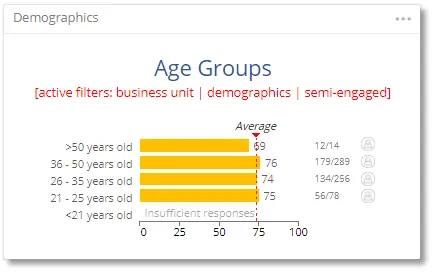For an employee survey to be effective and of any value, the survey needs to be:
- representative (adequate sample size that accurately reflects the views of the broader population),
- credible (anonymous and voluntary), and
- useful (asking the right questions at the right level so issues that matter can be pinpointed).
Conducting an employee engagement survey is an essential first step in the journey towards managing the engagement levels of an organization’s workforce. For an employee engagement survey to be of any value, however, the survey results should be accurate and useful, which will only be the case if (1) a sufficient number of employees were prepared to voice their opinions and to participate in the survey process, and if (2) they were honest and genuine in their responses. The factors that are critical to ensuring valid and useful survey results are briefly outlined below.
Management buy-in
Senior management’s commitment to conducting the survey – and acting on the survey results – is probably the most effective way of increasing employee participation in the survey. Senior management should be briefed on the survey process at an early stage, before the announcement to the rest of the employees, and should actively and visibly endorse and promote the survey.
The buy-in of frontline managers and/or supervisors should also be actively pursued. They should understand that the purpose of the survey is to make constructive improvements in the organisation, and they should be encouraged to discuss the importance and merits of the pending survey with their direct reports. If managers or supervisors do not endorse the study, their direct reports are less likely to participate.
Anonymity and confidentiality
Employees need to understand that the survey will be conducted on an anonymous basis and that their responses cannot be traced back to them. They need to understand that they will not be held accountable for their survey responses and that they will not in any way be victimized, otherwise they will either refuse to participate in the survey, or they will skew their responses to make sure they say the ‘right’ thing.
To convince the employees of the anonymity of their responses to the survey, it may be necessary to explain to them that:
- They will not be required to provide their names or contact details anywhere in the survey;
- Smaller departments or teams will be grouped together in order to protect their anonymity;
- Demographic attributes (e.g. qualifications, age) will only be used in aggregate format for statistical purposes;
- An external company (survey provider) will conduct the survey on a neutral and professional basis; and
- Survey results can only be viewed and accessed by management as consolidated (aggregate) survey data per business unit via an online analytics dashboard.
Please note that to protect the anonymity of survey respondents, the analytics dashboard will not display the survey results of business units and sub-units with fewer responses than the anonymity threshold of minimum 4 survey responses. The anonymity threshold will apply to cases where a business unit and/or demographic filter have been set, and will impact all graphs and tables where survey scores are displayed, such as the Engagement Indicator scores for the Age demographic category on the Summary page.

Voluntary participation
Employees should be clearly informed that their participation in the survey is entirely voluntary and that no-one can force them to participate in the survey. Management should also understand that they must in no way coerce or pressurize employees to participate in the survey – they should not even ask their employees whether they have completed the survey or not. Any form of emotional pressure on employees to participate in a survey can skew the survey results and should be avoided at all cost.
| For more information, click on a sub-menu item at the top of the page⇑ or in the right margin⇒ |
